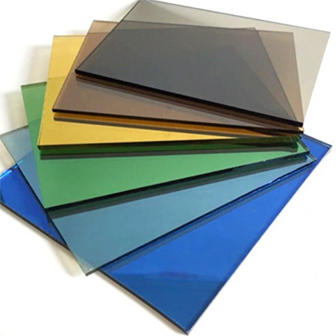Dec . 27, 2024 22:41 Back to list
what is the difference between regular glass and tempered glass
What is the Difference Between Regular Glass and Tempered Glass?
When it comes to choosing glass for various applications, understanding the differences between regular (or annealed) glass and tempered glass is essential. Each type of glass has unique properties and is suited for different purposes. This article will explore the characteristics, manufacturing processes, strengths, and applications of both regular and tempered glass.
Manufacturing Process
Regular glass is produced through a straightforward melting process, where silica sand, soda ash, and limestone are combined and heated until they melt into a liquid state. This molten glass is then formed into sheets and allowed to cool slowly in a controlled environment. This slow cooling process enables the glass to achieve a uniform thickness and clarity but results in internal stresses, making it relatively fragile.
On the other hand, tempered glass is created through a more complex process that involves heating the glass to over 600 degrees Celsius and then rapidly cooling it using air blasts. This thermal tempering process alters the structure of the glass, ensuring that it is compressively stressed on the surface. This stress distribution plays a crucial role in enhancing the strength of the glass, making it far more resilient than its regular counterpart.
Strength and Durability
One of the most significant differences between regular glass and tempered glass is their strength. Tempered glass is approximately five to six times stronger than regular glass of the same thickness. This increased strength is due to the tempering process, which creates a balanced stress distribution that enhances its resistance to impacts, thermal stress, and other external forces.
Regular glass, while it can be used in various applications, is more vulnerable to breaking or shattering upon impact. When it does break, it can produce sharp shards that can pose safety hazards. In contrast, tempered glass is designed to break into small, blunt pieces, minimizing the risk of injury. This safety feature makes tempered glass a preferred choice in environments where there may be a risk of breakage, such as in shower doors, glass doors, and facades.
what is the difference between regular glass and tempered glass

Thermal Resistance
Another notable difference between regular and tempered glass is thermal resistance. Regular glass can be damaged by rapid temperature changes, which can cause it to crack or shatter due to the internal stresses created by uneven heating. Tempered glass, however, is built to withstand higher temperatures and sudden changes in temperature. This makes it an excellent choice for applications where thermal shock is a concern, such as in oven doors and glass panels in commercial kitchens.
Applications
The applications of regular and tempered glass vary significantly due to their differing properties. Regular glass is often used in windows, mirrors, and picture frames where safety is less of a concern and where cost-effectiveness is a priority. Its clarity and aesthetic appeal make it suitable for residential and some commercial uses.
In contrast, tempered glass is widely used in situations where safety and durability are critical. Common applications include shower doors, glass balustrades, tabletops, and automotive glass. Its ability to resist breakage and withstand thermal stress makes it ideal for high-traffic areas and environments prone to impact.
Conclusion
In summary, the primary differences between regular glass and tempered glass lie in their manufacturing processes, strength, thermal resistance, and applications. While regular glass is cost-effective and suitable for many standard use cases, tempered glass offers enhanced safety, durability, and resistance to thermal shock, making it the preferred choice for more demanding environments. When selecting glass for a particular application, it is essential to consider these differences to ensure the right choice is made for safety, functionality, and longevity. Whether you are designing a new building, renovating your home, or selecting materials for a special project, understanding the distinctions between these two types of glass will help you make informed decisions.
-
Safety and Style with Premium Laminated Glass Solutions
NewsJun.24,2025
-
Reinvents Security with Premium Wired Glass
NewsJun.24,2025
-
Premium Float Glass Line for Modern Architecture
NewsJun.24,2025
-
Low Emissivity Glass for Energy-Efficient Architecture
NewsJun.24,2025
-
High-Performance Insulated Glass Solutions for Modern Architecture
NewsJun.24,2025
-
Elevates Interior Style with Premium Silver Mirror
NewsJun.24,2025
Related PRODUCTS














